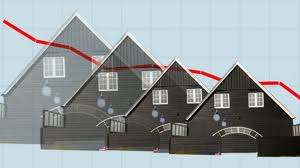Total housing inventory at the end of January fell 4.9 percent to 1.74 million existing homes available for sale, which represents a 4.2-month supply 2 at the current sales pace, down from 4.5 months in December, and is the lowest housing supply since April 2005 when it was also 4.2 months, according to the National Association of Realtors’ existing home sales release.
 Total housing inventory at the end of January fell 4.9 percent to 1.74 million existing homes available for sale, which represents a 4.2-month supply 2 at the current sales pace, down from 4.5 months in December, and is the lowest housing supply since April 2005 when it was also 4.2 months, according to the National Association of Realtors’ existing home sales release.
Total housing inventory at the end of January fell 4.9 percent to 1.74 million existing homes available for sale, which represents a 4.2-month supply 2 at the current sales pace, down from 4.5 months in December, and is the lowest housing supply since April 2005 when it was also 4.2 months, according to the National Association of Realtors’ existing home sales release.
Listed inventory is 25.3 percent below a year ago when there was a 6.2-month supply. Raw unsold inventory is at the lowest level since December 1999 when there were 1.71 million homes on the market.
"We expect a seasonal rise of inventory this spring, but it may be insufficient to avoid more frequent incidences of multiple bidding and faster-than-normal price growth," said NAR Chief Economist Lawrence Yun.
NAR reported that the national median existing-home price was $173,600 in January, up 12.3 percent from January 2012, which is the 11th consecutive month of year-over-year price increases; that last occurred from July 2005 to May 2006. The January gain is the strongest since November 2005 when it was 12.9 percent above a year earlier.
Distressed homes - foreclosures and short sales - accounted for 23 percent of January sales, down from 24 percent in December and 35 percent in January 2012. Fourteen percent of January sales were foreclosures and 9 percent were short sales. Foreclosures sold for an average discount of 20 percent below market value in January, while short sales were discounted 12 percent.



